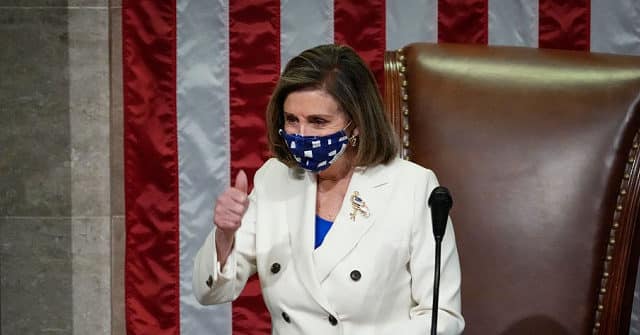Robert Popper is a Judicial Watch senior attorney who served as the deputy chief of the voting section of the Civil Rights Division of the U.S. Department of Justice from 2008 to 2013. In the following op-ed for The Hill he reveals the massive power grab the Left plans on elections across the land:
Ever since House Resolution 1, the Democrats’ 886-page partisan wish list of a voting bill, passed the House on a party-line vote earlier this month, its critics have had a lot to say. They correctly point out that the bill federalizes election law on a historically unprecedented scale, systematically impairs existing federal and state laws concerning election integrity, and imposes new burdens and restrictions on political speech and activity. All of this is apparent from the text of the bill.
Less obvious — indeed, almost hidden from anyone who does not specialize in voting law — is a provision of H.R. 1 requiring states to draw federal congressional districts in a way that favors Democrats: “Districts shall comply with the Voting Rights Act … including by creating any districts where two or more politically cohesive groups protected by such Act are able to elect representatives of choice in coalition with one another.” The bill adds that districts must “ensure the practical ability” of such groups to “elect representatives of choice … regardless of whether or not such protected group constitutes a majority” of a district.
“In coalition with one another” — these innocent-seeming words are, in fact, an attempt to reverse particular rulings of the Supreme Court and compel the drawing of what are known as “coalition” districts specially constructed to ensure Democratic majorities.
The checkered history of coalition districts is bound up with cases interpreting Section 2 of the Voting Rights Act, which forbids any practice that causes members of a racial group to “have less opportunity than other members of the electorate to participate in the political process and to elect representatives of their choice.” This clause has long been interpreted to forbid at-large elections where these allow a racial majority to dominate a racial minority.
Here is how this might happen: In an at-large election for, say, a city council of seven members, every member is elected by the entire population of the city; if voting is racially polarized, a racial majority of only 55 percent of the city’s voters has the power to elect all seven council members, effectively denying the large minority any representation whatsoever. The remedy for this kind of violation of Section 2 is the imposition of electoral districts. These allow the city-wide minority a chance to prevail locally in at least a few of those districts. But before compelling such a remedy — that is, before throwing out a jurisdiction’s chosen electoral system and imposing a district plan — the Supreme Court logically requires that a racial minority at least have a chance of forming a majority in one of the new districts.
In the intervening years, the plaintiffs suing to enforce Section 2 have most often been Black or Hispanic voters. In any particular jurisdiction, they may not have sufficient numbers to make up a majority in a new district. Further, many of these voters tend to vote for Democrats, and the requirement that they be placed in districts where they can form a majority often conflicts with the desire of Democratic operatives that they be placed strategically to maximize the party’s electoral chances.
Enter the concept of coalition districts. Suppose there are too few black voters to form a majority in a new district. The idea is that, if enough white voters join them, or if enough Hispanic or other minority voters join them, and if this “coalition” is large enough to constitute a voting majority in that district, then drawing it becomes legally necessary to ensure minority voters’ opportunity “to elect representatives of their choice.”
This is a transparent partisan trick. What special interest do minority voters in such a district share with other minority or majority voters who may join them to form a majority? The only answer is that they all intend to vote the same way.
Indeed, drawing such a coalition district seems to reduce to a mandate to “find as many Democrats as you can and put them in a district.” An ideological preference cannot be enshrined as a voting right. As Richard Pildes put it in 2002, a “statute aimed at counteracting discrimination in voting would thus be transformed into a substantive, partisan entitlement to office.”
In Bartlett v. Strickland in 2009, the Supreme Court rejected the idea that white votes could be combined with Black votes to constitute a majority in a Section 2 remedial district. As Justice Kennedy observed, Section 2 does not grant “special protection to a minority group’s right to form political coalitions.” And in Perry v. Perez in 2012, the court implied that the same reasoning would bar the drawing of a “minority coalition opportunity district” in which “two different minority groups” were expected “to band together to form an electoral majority.”
Now, H.R. 1 seeks to revive this bad idea and to make it federal law. Like so much else in the bill, it is sure to be subject to legal challenges — in this case, for blatantly favoring the electoral prospects of one party and one viewpoint.



